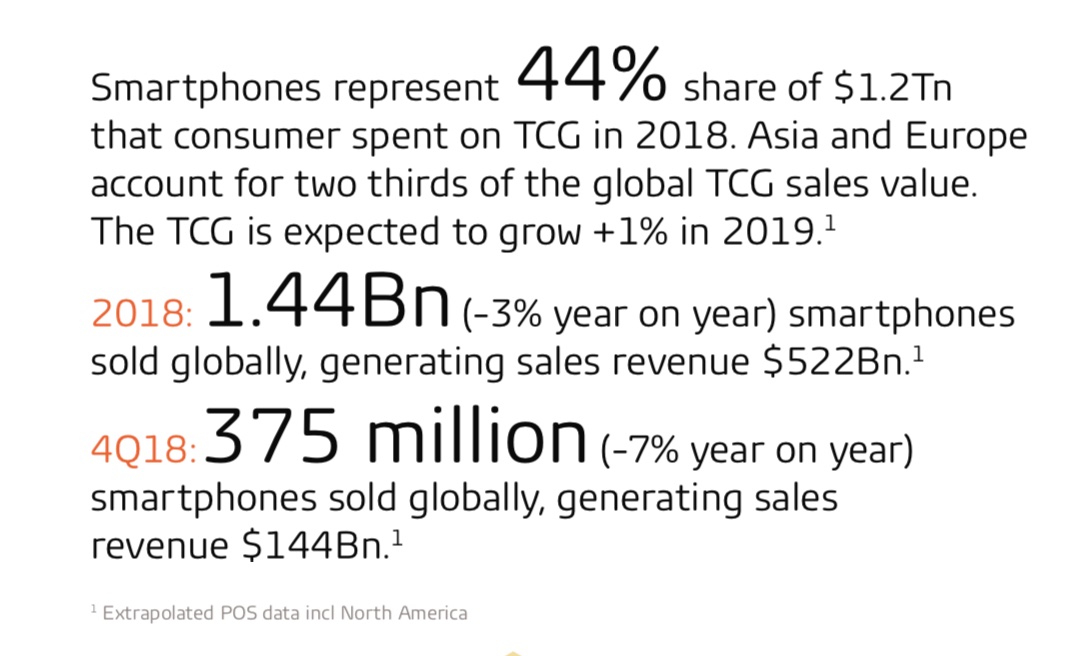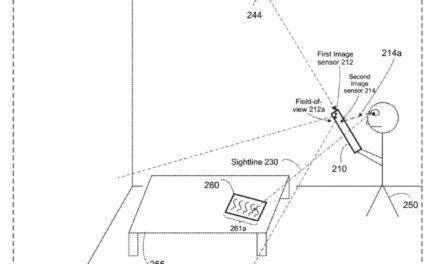Claiming a 44 % share smartphones, mobile phones and wearables are still the powerhouse in the $1.2 trillion technical consumer goods (TCG) market. Although global smartphone demand declined three % in 2018 to 1.44 billion, sales remain strong and reached $522 billion, according to the GfK (www.gfk.com) research group.
Global smartphone sales remained strong in 2018 as the premium trend continues to fuel growth. In figures this equates to an increase of five % ($522 billion). However, the demand for smartphones in 2018 declined by three % to 1.44 billion units sold worldwide versus 2017. Smartphones represent the majority of the total spend on the global TCG market last year. This is expected to grow plus one % in 2019.
The figures for quarter four (Q4) 2018 reveal a similar trend. Around 375 million smartphones (down 7%) were sold worldwide year-on-year with a sales value of $144 billion.
Around 12% (up from 9% in 2017) of smartphones sold were priced at more than $800 in 2018. The mid-segment of $150-400 continues to be an important competitive battleground accounting for 46 % of smartphones sold globally in 2018 (up 2% from 44 % in 2017).
Although a somewhat tough comparison with a strong Q4 2017, from October to December 2018, the dearth of appealing innovation continued prolonging replacement cycles and putting average selling price (ASP) under pressure. As a result, ASP declined two % to an average of $384.
GfK’s Consumer Life Study shows that consumer trends are changing when it comes to possessions. Not only do they “prefer to own fewer but higher quality items” that they will pay premium prices for, but they “value experiences more than possessions”. Whether it is memory size, larger screen size or a multiple high megapixel camera this innovation does not ignite consumers’ imagination and stimulate demand.
“Our research shows that although the new features in smartphones have comparable performance features and computing power with laptops, these high-end specs still need to be converted into new experiences,” Igor Richter, GfK’s Telecommunication expert says. “High end gaming has been reigned by the PC industry and is currently a major growth driver there. However, there is an untapped potential for more demanding gaming on the smartphone. Despite the relatively small smartphone screens compared with PC’s, their fast chipsets, sharp displays and increased battery capacity makes these gaming smartphones ideal handsets to deliver the processing power hungry gaming experience on the go. This explains why 55 % of smartphone users worldwide played games on their smartphone in the last 30 days.”
Core wearables remained on a strong growth path in 2018, with year-on-year demand up 16 % and sales value up 35 %. Demand was driven by the rise of SIM-enabled smartwatches which represent the majority of sales value within the Core wearables category. SIM-enabled smartwatches accounted for 17 % of the Core wearables sales value, up from 8% in 2017.





